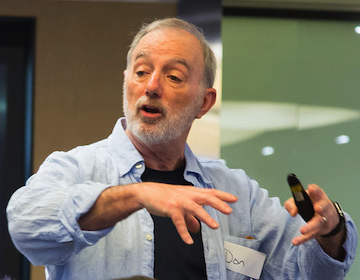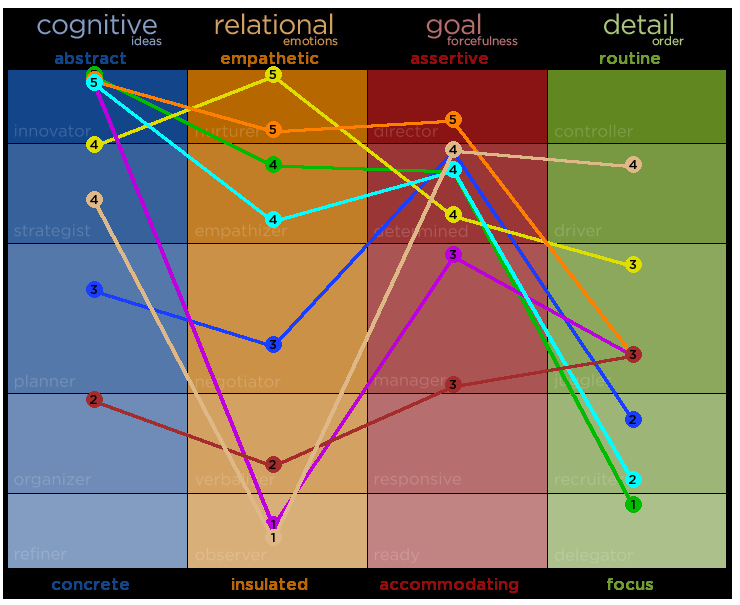by Don Gray, February 18, 2023
 –>
–>
A map is not the territory it represents, but if correct, it has a similar structure to the territory which accounts for its usefulness. - Korzybski
We represent reality by creating models in our minds. We build these models incorporating our culture, family origin, and life experiences. We keep and use these models because they worked for us in the past. They are our theory of “how the world works.”
The problems with mental models arise when they become implicit—when they exist below the level of our awareness. - Senge
Our mental models are not necessarily good nor bad, naughty or nice—they simple are our theory of how the world works. But is our theory correct? Is it fit for function? How can we improve the match between “theory in my head” and “the world out there.”
“It is tempting but misleading to regard abstract concepts as if they were concrete objects. … To reify is to invent a concept (or “construct”), give it a name, and then convince ourselves that such a thing objectively exists in the world.”1
 People are concrete objects. We exist in the real world. You can measure my height, mass, age, sex. We can make comparisons. I’m (Don) older than Andy. Andy is older than Tony.
People are concrete objects. We exist in the real world. You can measure my height, mass, age, sex. We can make comparisons. I’m (Don) older than Andy. Andy is older than Tony.
 Personality is a concept. And a lot of money gets spent divining and diagnosing personality. In my career I’ve been through Myers-Briggs, Element B (updated FIRO-B), Social Styles, and Action/Influence personality evaluators.
Personality is a concept. And a lot of money gets spent divining and diagnosing personality. In my career I’ve been through Myers-Briggs, Element B (updated FIRO-B), Social Styles, and Action/Influence personality evaluators.
A decade ago, before Accenture arrived on site, I worked with seven other coaches at a common client. Our group personality plot was… interesting. But does this sort of model reveal the “truth” about us? What does “truth” even mean in such a context?
I personally use the The Wheelbarrow Test as my litmus test for reification. That is, “Can I put this (noun) in a wheelbarrow?” If so, I have a concrete object. If not, I need to use care when treating this as a real/concrete object. Because it’s not.
We use theories to explain observable data. They come in two basic types: Theories that can be verified/proven (type “E”), and those that cannot (type “C”).
Event (or “Type E”) Theories provide explanations that lend themselves to direct measurement. Given the proper circumstances, an Event Theory can be verified or proven.1
For example, we create a theory about improving delivery of valuable outcomes to our users. It might include moving to a Continuous Paradigm by using Tracer Bullet Development, Answers From Experiments with Continuous Integration. We can check our theory with Answers From Experiments, allowing us to verify our theory.
Again, without theory, there is nothing to revise. Without theory, experience has no meaning. Without theory, one has no questions to ask. Hence without theory, there is no learning. — Deming
Construct (or “Type C”) Theories provide explanations that, by their very nature, are not directly measurable. As a consequence, even under ideal conditions, a Construct Theory can never be “proven.” This is because the explanations are intangible abstractions1—nothing that you could put in a wheelbarrow.
By now you’ve noticed the GROWS Method® focuses on learning, and continuous learning at that.
We use the Dreyfus Model of Skill Acquisition as a framework for the GROWS Method® habits. We added a “Stage 0” because some organizations just aren’t ready to change.
Can the Dreyfus Model of Skill Acquisition be proven true? No. That also means it cannot be proven false. Construct Theories aren’t true or false, but they can be useful.
In other words, “correctness” is an inappropriate criterion for evaluating these theories. They should be judged, instead, solely in terms of their usefulness (or lack thereof), an endeavor that is all to rare. - Levy
Usefulness happens in a context. While chatting with @UrsEnzler@tooting.ch about the Dreyfus Model of Skill Acquisition, he shared that his group modified Bloom’s Taxonomy with the following levels:
1) Can understand the topic/practices/… 2) Can apply the topic/practice/… as is 3) Can situationally adapt the practice/…
They took an existing model (Type C) and adapted to their own context. Perhaps, just maybe, this could now form the basis of a Type E theory.
When you encounter something confusing, ask yourself if you’re dealing with reality or a reification. Happy users are real. Story points are a reification. Always Remove Proxies to People
Is the model/theory in question useful? If so, you don’t need to “prove” its correctness. Be happy and move on.
Theory is a window into the world … To copy an example of success, without understanding it with the aid of theory, may lead to disaster. - Deming
It’s very common in software development to lurch into total disasters by implementing another company’s best practices. Their practices will only work for you if their context matches your context very closely. Remember that you are not Spotify, or Netflix, or Google, or Amazon, etc.
Instead of blindly copying practices, use the GROWS Method® Three Track Attack and Answers From Experiments to build the set of practices that fit your company.

1 Tools of Critical Thinking: Metathoughts for Psychology, David A. Levy
— Don Gray
Follow @growsmethod in the Fediverse, or subscribe to our mailing list:
Sign up for more information on how you can participate and use the GROWS Method®. We will not use your email for any other purpose.